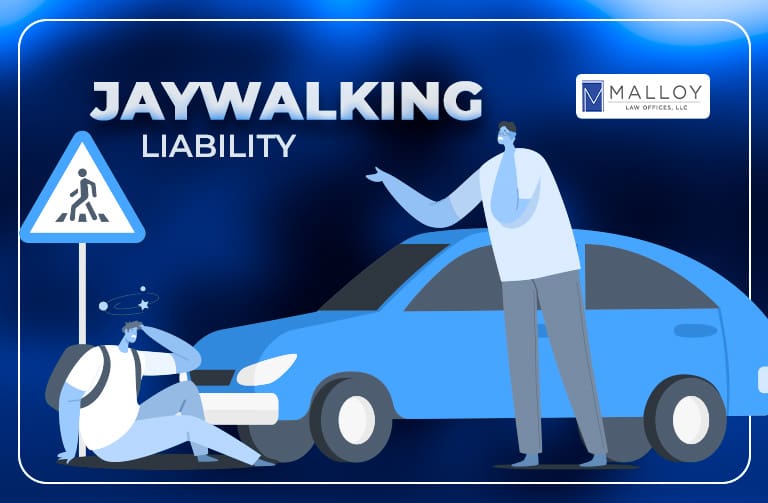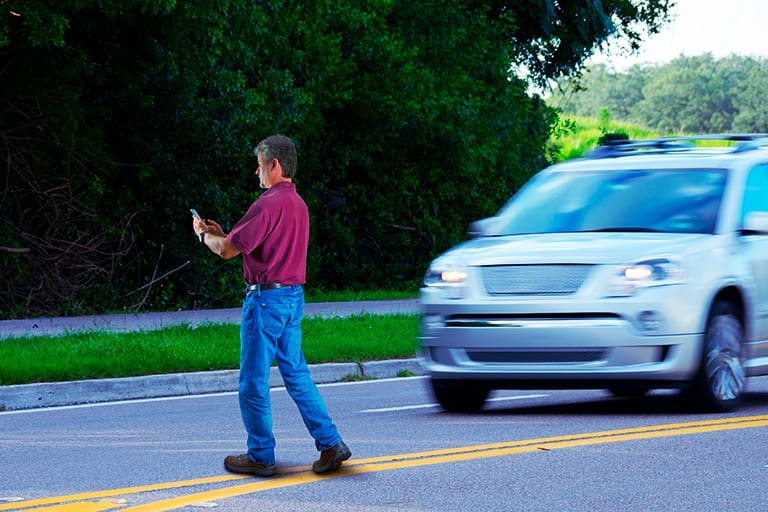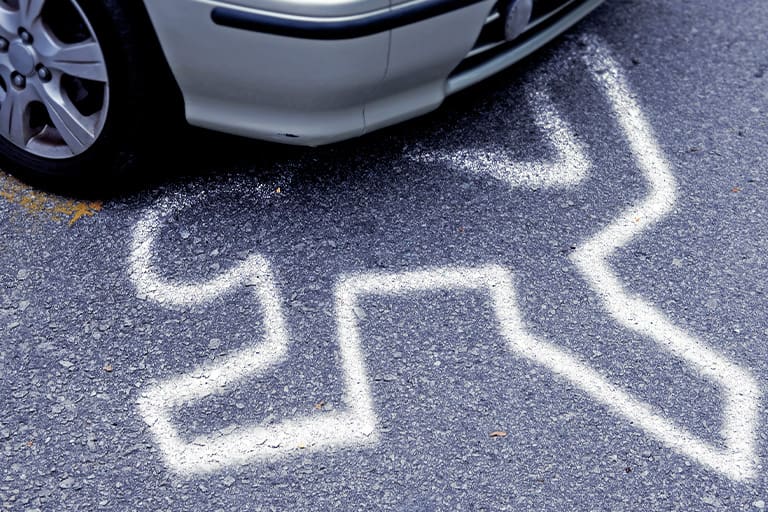Jaywalking Liability and You
When discussing infrastructure and civil engineering, the concept of “walkability” comes up often. American towns and cities have long been criticized as overly car-centric, often at the expense of the common pedestrian. A lack of accommodation isn’t going to keep people from walking. As is so often the case, human stubbornness and capacity for risk-taking will kick in where infrastructure fails. In urban environments which prioritize cars over pedestrians, jaywalking becomes an everyday fact of life. It’s likely that you don’t even consider it irregular, let alone dangerous. You see the nearest crosswalk is inconveniently located. You don’t want to go out of your way, and so you wait for a lull in traffic and jaywalk. This is understandable, but highly irresponsible, especially in our region. Today’s Malloy Law blog post will examine jaywalking liability.
What Counts as Jaywalking?
Jaywalking isn’t just about crossing mid-block. It also includes:
- Entering a crosswalk against a red “Don’t Walk” signal
- Ignoring pedestrian signals entirely
- Crossing outside marked crosswalks, even on quiet residential roads
In most jurisdictions, it’s considered a minor offense, typically resulting in a small fine. But from a civil liability standpoint, it’s a much bigger deal.
Jaywalking Liability and Contributory Negligence Laws
Jaywalkers have rights too, the mere fact that a pedestrian is in violation of the law does not give drivers the right to disregard their safety. If, for instance, a jaywalker is hit and killed by a motorist, that driver may still be subject to a vehicular manslaughter charge. However, in the case of a civil lawsuit, the decision to violate the law by jaywalking can leave a severely injured person barred from recovery.
In most parts of the USA, personal injury lawsuits are subject to what is known as comparative negligence. This legal concept can basically be understood as a means of splitting the blame for an incident while still making a definite statement of fault. For instance, if a pedestrian was jaywalking while hit by a speeding, distracted, or otherwise negligent driver, the court may decide that the jaywalker was partially responsible for their injury and reduce the amount of compensation they can receive by a given percentage.
Maryland, DC, and Virginia follow one of the toughest standards for civil law in the country; contributory negligence. That means if you’re assessed as even one percent at fault for your injuries, you may be barred from recovering compensation altogether. So yes, if you’re hit by a speeding driver but you were jaywalking, a court could find you partially responsible, and that could mean zero recovery. Insurance companies know this. They’ll use any technicality, like jaywalking liability, to deny or reduce your claim.
Who Has the Right of Way?
Here’s how it breaks down:
- At crosswalks with lights: Pedestrians must follow the signal.
- At marked crosswalks without lights: Drivers must yield to pedestrians.
- In Virginia: Pedestrians may not step into traffic dangerously or interfere with vehicles that are too close to stop in time.
- In D.C.: Even when a driver has a green light, they must yield to pedestrians lawfully crossing the street.
In short: the law protects pedestrians, but it also binds them. Pedestrians also have to follow the law in order to receive its protection. We’ve seen too many cases where someone was seriously injured, but their ability to recover damages was wiped out because they crossed mid-street or ignored a signal. The time you save isn’t worth the potential risk, not when it could cost you your health, your livelihood, and your legal standing.
How Malloy Law Can Help
If you’ve been injured in a pedestrian accident, Malloy Law can help. We’re proud to serve injured pedestrians across Maryland, Virginia, and DC, especially when insurance companies try to make things more difficult than they should be. Our multilingual team is here to walk you through your options and protect your rights every step of the way. Contact Malloy Law today for a free consultation, let’s win your case.




